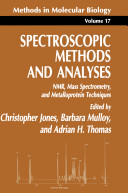- Paperback: 316 pages
- Author: David A. Kendall (Author), Stephen J. Hill (Author)
- Publisher: Humana Press (April 4, 1995)
- Language: English
- ISBN-10: 0896032981
- ISBN-13: 978-0896032989
This collection of self-contained, "hands-on" descriptions of
established laboratory protocols concentrates on receptor-mediated cell
signaling, with particular attention devoted to those receptors that are
part of the G-protein-linked superfamily. It offers those already
working in the field as well as those in related areas the opportunity
to expand their range of experimental techniques and to carry out
successful investigations without needing to refer to any other
methodological source.
Link (Rapidshare.com)










































